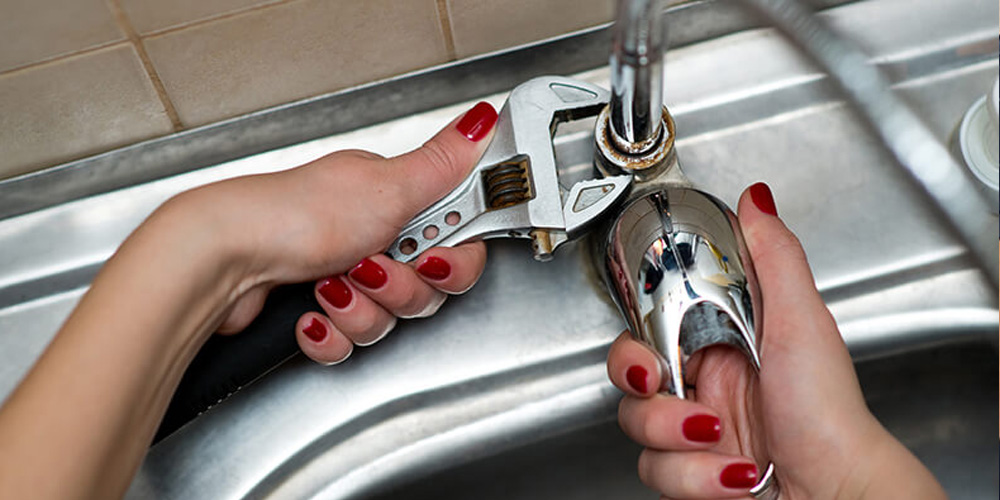Kitchen Tap Replacement Tools
The Kitchen tap tools needed to replace a kitchen tap can vary, but here are our recommendations for most kitchen taps:
Most kitchen taps have a horseshoe-type bracket to hold the tap to the kitchen sink. These horseshoe brackets are held with threaded rods and one or two small nuts.
The nut sizes vary on different taps, so a monobloc tap spanner set between 8 – 13mm will do the job. This is the same as changing basin taps, kitchen taps and single lever basin taps are virtually the same underneath
Learning how to change bath taps is quite different and can be a lot harder.
How to Remove a Kitchen Tap
To remove a kitchen tap:
- The first thing to do is lay a towel under the tap
- Turn off the water supply to the tap. If there are isolating valves on the two pipes under the kitchen sink, turn them off with a flathead screwdriver. If not, you will need to turn the mains water off at the stopcock.
- Open the kitchen tap to let the water out and open a tap upstairs if you have one. This will release most of the water lying in the pipes.
- Disconnect the two pipes connected to the kitchen tap under the sink. This is done by grabbing the isolation valve (or another fitting) with grips and turning the top nut anti-clockwise with an adjustable spanner.
- Undo the small nuts. Use one of the box spanners from your monobloc tap spanner set to undo the small nuts that are holding the tap onto the kitchen sink. Turn them anti-clockwise to remove the nuts
- Remove the bracket and pull the kitchen tap from the sink.
How to Fit a Kitchen Tap
To fit a kitchen tap:
- Screw in the new flexible tap connectors into the new tap, hand tight only.
- Feed the chrome plate and washer over the tap connectors if you have some.
- Screw in the threaded rod(s) if they aren’t already fitted, there's normally one or two.
- Feed the tap connectors through the tap hole in the sink and stand the tap in place.
- Fit the horseshoe rubber and plate over the threaded rods under the sink and screw on the nuts and tighten with a box spanner.
- Fit the nuts on the flexible tap connectors onto the isolating valves that the old ones were on.
- Turn the Water back on and test for leaks.
How to change a kitchen tap with copper pipes
Changing a kitchen tap with copper pipes is a bit more tricky than changing a kitchen tap with flexible tap connectors
You can follow the above steps for the most part.
You will need to cut the copper pipes with a 15mm pipe cutter and fit some isolating valves to the copper pipes, then you fit the new flexible tap connectors to the new isolating valves after removing the top nuts.
How to change a kitchen tap cartridge
To change a kitchen tap cartridge and fix a dripping tap, you need to remove the tap handle (usually with a 2,5mm hex key) and then remove the cartridge with an adjustable spanner, then fit the new kitchen tap cartridge and refit the handle
We would recommend purchasing the replacement head before beginning the job these can often be purchased directly from the manufacturer or your local plumber's merchant should be able to order them providing you know who manufactured the tap.
Conclusion
Replacing a kitchen tap can be difficult, especially if it’s hard to access.
Sometimes it’s virtually impossible to get any tools in properly because of the cupboard or other pipework
Make sure you turn the water supply off first and make sure to tighten the nuts up securely as you don’t want the tap coming loose after a few uses.

